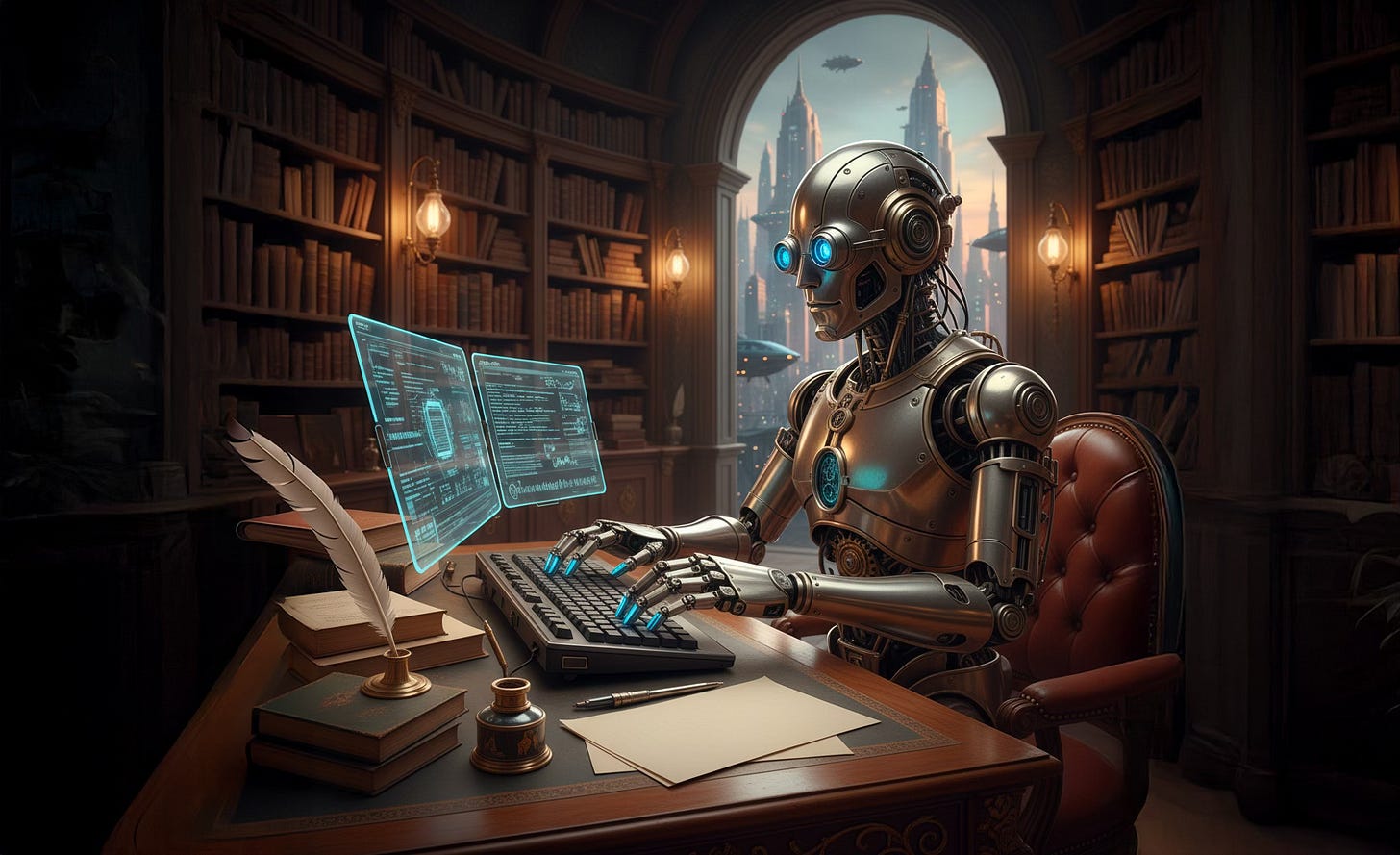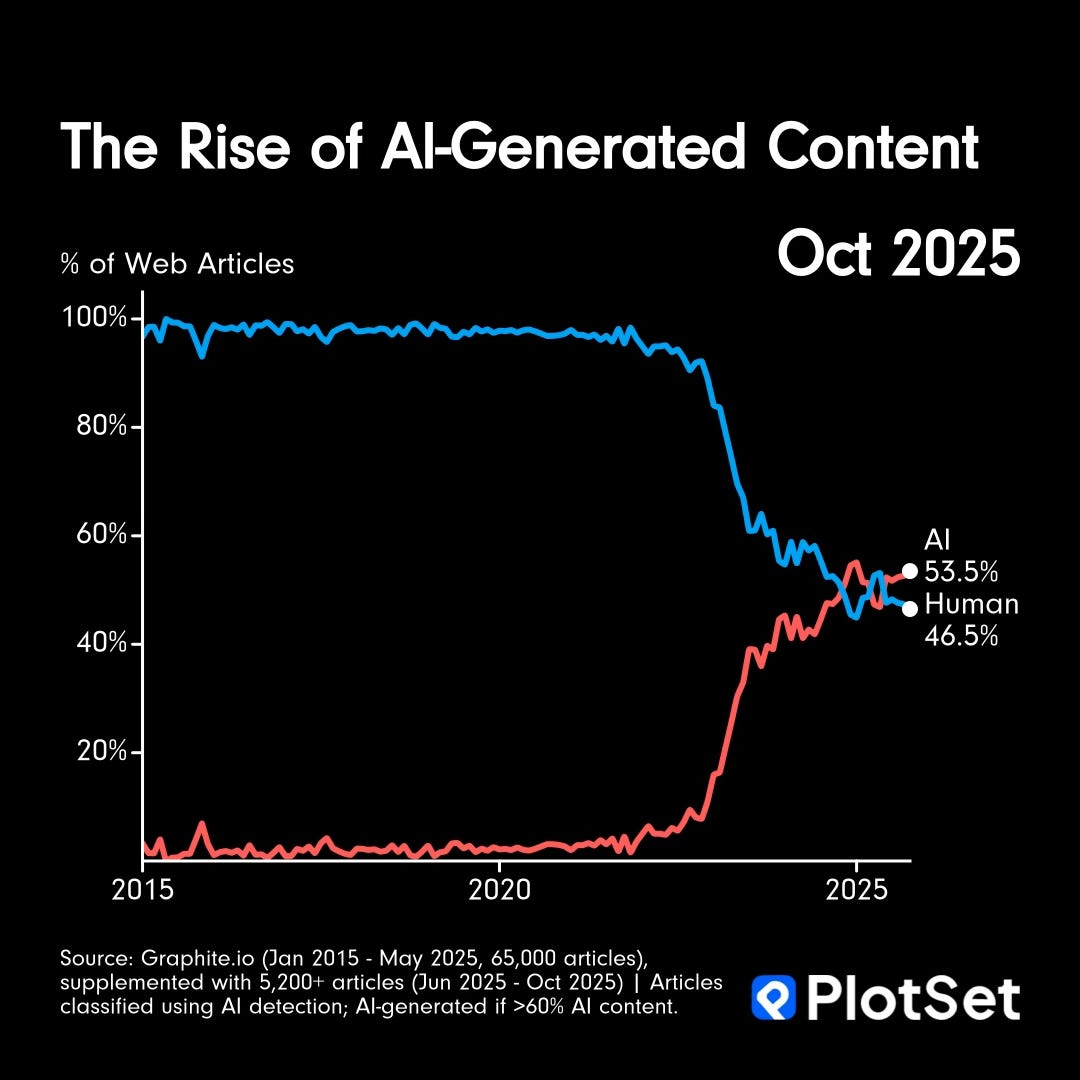AI is overtaking humans on the web
Five charts to start your day
We’re entering a 50:50 world: half of all web content is now written by humans, half by AI. Machines can produce words faster and cheaper than ever, yet human writing still holds its ground.
We’re not extinct yet.
Two Sundays ago, I rebuilt this dataset from Graphite on a rainy afternoon. The original was five months out of date, but the story hadn’t changed. What struck me most was running my AI detector on 24,000+ articles: mainstream media outlets are generating huge volumes of AI content.(I created the chart below using PlotSet Plus, the premium version of PlotSet.com, a data visualisation platform I cofounded.)
But here’s what the headline number doesn’t tell you: the total volume of content being created has exploded. Humans aren’t writing less, they’re writing more than ever. The marginal cost of producing content has collapsed. An article that once took a day now takes 30 minutes. This hasn’t replaced human writers, it’s raised the bar. We’re being forced to compete harder, write sharper, and deliver more value.
What we’re witnessing is a reorganisation of labour. There are things humans still need to write themselves, and things machines can handle perfectly well. The 50:50 split isn’t a battle, it’s a settlement. We’ve found a natural division, at least for now.
The trouble is, this equilibrium won’t last. The deeper question is what this means for communication itself. Email didn’t make us better communicators, we just sent more messages. Will AI writing tools make us more articulate, or just more prolific?
CHART 1 • AI is overtaking humans on the web
This crossing point creates a training data problem few are addressing. Every AI model built from 2026 onwards will be trained partially on AI-generated text. Models learning from models means errors, biases and stylistic quirks get amplified rather than corrected. The web becomes an ouroboros, endlessly consuming its own output.
When that happens, quality erodes as AI slop floods the market and genuine voices drown in noise. I’m already feeling this. The profession may shift from production to curation, from typing words to shaping meaning. The real differentiator will be originality and trust. And that could actually be brilliant for human writers who’ve been investing in authenticity whilst others chase volume.
There’s also an economic reckoning coming. If AI writes 70% of content by 2026, advertising economics collapse. Brands won’t pay the same rates for AI-written articles. Reader trust erodes, engagement drops, and the entire attention economy that funds online publishing gets repriced. We might be watching the final chapter of ad-supported digital media as we know it. If that happens, what becomes of content creators like myself? Will social media become a paid service to offset this loss in advertising revenue? And what does this mean for anyone making decisions about content strategy right now?
Source: PlotSet
I can’t help but worry about this because I create content for a living. Even before generative AI, life was tough for content creators like me, and our skills were taken for granted. It’s a bitter pill to swallow. Anyway, I have four more charts to share with you today. But you’ll need to be a paid subscriber to see them.




